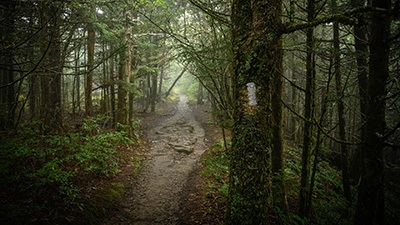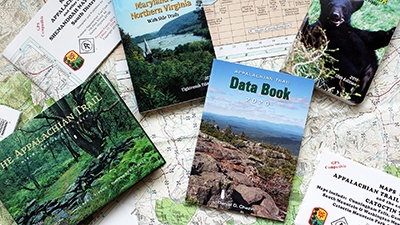by Anne Baker, ATC's marketing assistant
A new (voluntary) step for thru-hikers
September 2, 2015
Thru-hiker fever has officially set in. And with the general preparations like gear shakedowns, meal planning, mail drop logistics and (in some cases) quitting your job to hike thousands of miles, there’s another way the class of 2015 is getting ready for a thru-hike: voluntary registration.
The Appalachian Trail Conservancy (ATC) launched its Thru-Hiker Voluntary Registration system this year with the goal of not only better managing the Appalachian Trail (A.T.), but also enhancing the thru-hiker experience. With movies like “Wild” and “A Walk in the Woods” drawing attention to two of America’s national scenic trails, something had to be done to spread out the volume of thru-hikers who hit the A.T. at peak times. This voluntary registration system is one way the ATC hopes to address potential overcrowding, especially at the southern end of the A.T. in March and April
Currently, more than 800 people have registered their thru-hikes through this system, allowing hikers to see how many have plan to start their thru-hike on a particular day and giving them a chance to see when crowded conditions will exist. Prospective thru-hikers can see on what days thru-hikers have registered not only for northbound and southbound thru-hikes, but also for thru-hikes starting in Harpers Ferry or other locations.
This planning feature is especially appealing to hikers like Barbara “Firefly,” who will set out on a thru-hike this year with her 26-year-old son:
“When we started planning, we intentionally looked into the traditionally crowded start days and tried to avoid those as well as avoiding a weekend start. I really think for many people, being able to look and visually see days that are already packed will help future thru-hikers spread themselves out.”
Hiking the A.T. is practically a lifelong dream for Firefly, who began planning her hike when she was 12. Back then, she was using the library and snail mail to gather information while also getting firsthand experience by working on trail crews. Yet it wasn’t until now that she felt like she could to take the amount of time off that’s required for a thru-hike, and when she began planning again, she realized that the A.T.—and the process of planning—had changed.
“I was a bit sad at a lot of the negatives I’ve heard concerning problems resulting from overcrowding, especially at the both ends of the Trail. As a lifelong dream I couldn’t let go of the idea of a traditional thru-hike, even though the cool breeze option looks awesome. The reality is we are approaching our hike with a degree of flexibility, evaluating our progress along the way and if needed changing to an alternative itinerary.”
Firefly’s willingness to embrace an alternative plan if necessary is asentiment that is growing among potential thru-hikers. It’s good timing, too—as the popularity of long-distance hiking trails increases, the A.T. will benefit from those who recognize that a thru-hike doesn’t have to start at Springer Mountain, or even Katahdin. After all, the journey isn’t so much about the destination, but the process of getting there.
To everyone who has registered their thru-hike, and especially those who made an effort to avoid popular start dates or even selected an alternative starting location, thanks for making the A.T. an incredible hiking and camping experience—and for helping it stay that way.





